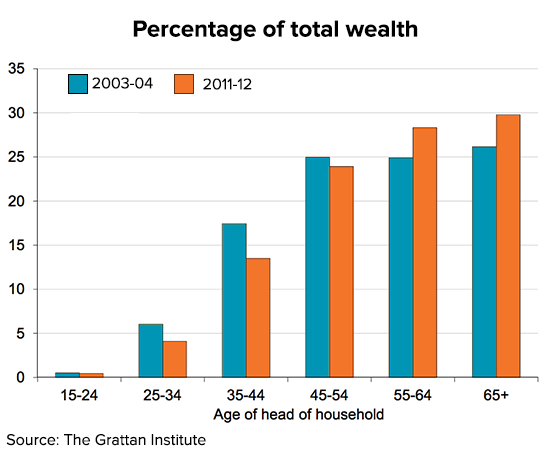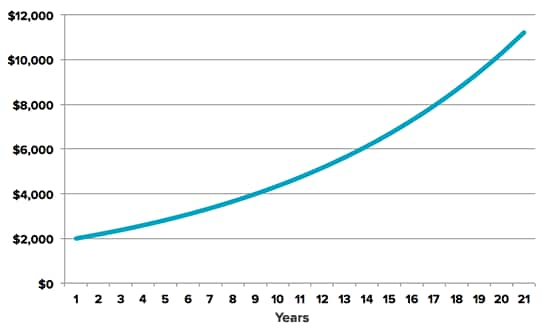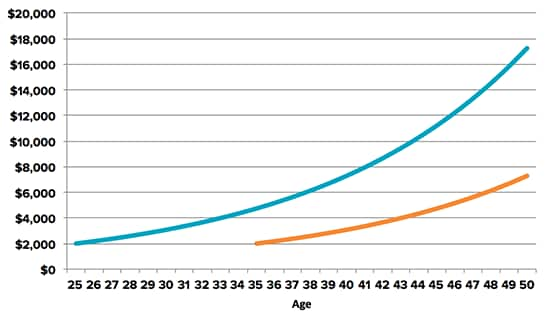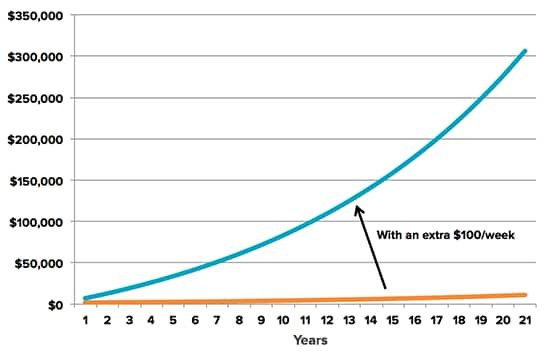The wealth of younger Australians isn’t keeping up with the rising cost of living.
That’s according to The Grattan Institute which recently released a report which showed that those in younger age groups have increased their wealth much slower than those who are older. As a result, the proportion of total wealth owned by those under 44 years old went backwards over the last 10 years. The housing boom is also making it harder for young people to work towards owning their own home and accumulate wealth, with home ownership rates falling the most in the younger age brackets. According to the Australian Bureau of Statistics, first home buyers now account for just 8.1% of all national housing sales, which is the lowest proportion on record and well below the long-term average of 15.4%.2
The housing boom is also making it harder for young people to work towards owning their own home and accumulate wealth, with home ownership rates falling the most in the younger age brackets. According to the Australian Bureau of Statistics, first home buyers now account for just 8.1% of all national housing sales, which is the lowest proportion on record and well below the long-term average of 15.4%.2

Source: Supplied
Despite housing affordability being at all-time lows, there are other investment opportunities to outside of direct property which can be accessed by younger Australians. In fact, being in your 20’s is actually the perfect time to start thinking about shares and bonds. With a reasonable time horizon, diversified shares and bonds have historically offered excellent investment returns compared to leaving savings in the bank.
Here are some tips to consider when looking into investing to grow your wealth when you’re young.
1) Start investing sooner rather than later
Investing early means you can take advantage of compounding.
As ASIC’s Money Smart website suggests, compound returns are like double chocolate topping for your money. Compounding allows not only your initial investment to grow, but also increases the value of re-invested profits. For example; if you earn a 9% capital gains on your initial $2,000 investment in the first year and your profits are reinvested, you would then be earning returns on $2,180 in your second year (initial $2,000 and additional $180 reinvested).
As shown in the chart below, compounding can make a huge difference to your final balance over a longer period. Assuming a 9% growth per year (post-tax), the initial $2,000 investment would end up being $3,077 after 5 years, $4,735 after 10 years and $11,209 after 20 years with compounding. As you can see, the steepness of the slope increases over time. This is what investment pioneer John Bogle describes as “The magic of compounding returns”. When investing in shares or bonds you can access compounding returns by re-investing the dividends and distributions you receive. When you’re young you probably won’t be relying on dividends and distributions to live off so re-investing can be a great option. Because the impact of compounding gets bigger with time, the earlier you start investing, the better the result. Investing $2,000 at 25 as opposed to 35 could double the profit you make by the time you’re 50.
Because the impact of compounding gets bigger with time, the earlier you start investing, the better the result. Investing $2,000 at 25 as opposed to 35 could double the profit you make by the time you’re 50. The difference would even be bigger if you make regular contributions along the way. This brings us to our second tip.
The difference would even be bigger if you make regular contributions along the way. This brings us to our second tip.

Assumes an initial amount of $2,000 at 9% return per year Source: Supplied

Assumes an initial amount of $2,000 at 9% interest per year Source: Supplied
2) Invest regularly
Putting savings aside every month will help boost your final balance, even small amounts like $100 a week. Regular investments will also help you take advantage of dollar-cost averaging to help reduce your risk. Dollar-cost averaging is a strategy to reduce the impact of volatility in the market but investing smaller amounts over time. Because the markets rise and fall over short periods, it can be hard to pick the right time to be buying and selling, so investing regularly can help balance out how much you pay for your investments.
Regular investments will also help you take advantage of dollar-cost averaging to help reduce your risk. Dollar-cost averaging is a strategy to reduce the impact of volatility in the market but investing smaller amounts over time. Because the markets rise and fall over short periods, it can be hard to pick the right time to be buying and selling, so investing regularly can help balance out how much you pay for your investments.

Assumes an initial amount of $2,000 at 9% interest per year Source: Supplied
Investing regularly is a great way to achieve goals quicker – whether it be a new car, round-the-world holiday, deposit for a property, or wedding ring. Plus it helps you be more disciplined with spending.
3) Diversify your investments
Many people invest by just picking a few stocks. While it can be exhilarating watching your stocks go up and down, being exposed to just a few companies can put your capital at significant risk. If just one of the companies faces financial hardship or disappoints the market, a significant portion of your portfolio might be lost. Only investing in a few shares leads to a higher risk portfolio which means that you are more likely to see big swing up and down. This can lead to you making a decision to sell because of your emotions rather than sticking to the long term plan.
One alternative to picking stocks is investing in managed funds or exchange traded funds (ETFs). These enable you to spread the risk across hundreds or even thousands of companies so you are not overly exposed to any one business. Managed funds and ETFs can also give you access to bonds and global shares which can provide additional diversification to your portfolio. Diversification across countries and assets is important as price falls in one country or asset class can be balanced by rises in others.
It is also worth considering “passive” ETFs so that you’re not paying higher fees for “active management”. Keeping fees low is important as highlighted by the Stockspot Fat Cat Funds Report, which found that 78% of managed funds using the S&P/ASX 200 as a benchmark underperformed the market after fees. This means that most fund managers who are paid to try and beat the market aren’t able to do so. Therefore it can often provide a better result to simply ‘track’ the market with an indexed ETF. Investing in ETFs can be a great way to keep the fees low and diversify at the same time. A single investment in an ETF gives you access to shares in thousands of companies within an index like Apple, Google, BHP, Woolworths and Westfield so you don’t have to worry about picking the wrong stock. With the right mix of a range of different ETFs, you can have a well diversified portfolio of shares, bonds and commodities to reduce risk and optimise returns.
Investing in ETFs can be a great way to keep the fees low and diversify at the same time. A single investment in an ETF gives you access to shares in thousands of companies within an index like Apple, Google, BHP, Woolworths and Westfield so you don’t have to worry about picking the wrong stock. With the right mix of a range of different ETFs, you can have a well diversified portfolio of shares, bonds and commodities to reduce risk and optimise returns.

Source: Supplied
Share

